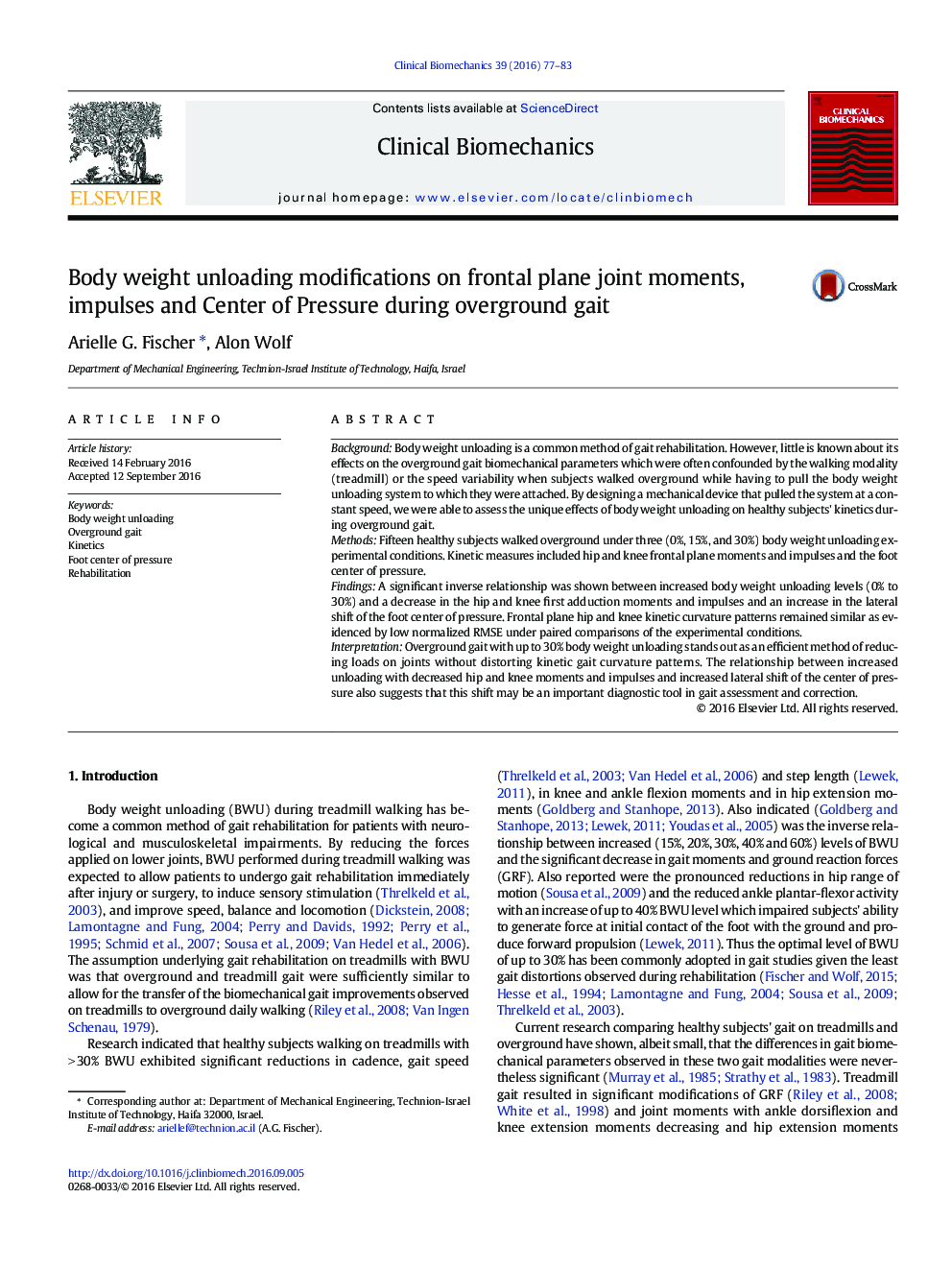| Article ID | Journal | Published Year | Pages | File Type |
|---|---|---|---|---|
| 6204576 | Clinical Biomechanics | 2016 | 7 Pages |
â¢Evaluate the effects of body weight unloading on gait kinetic biomechanical parametersâ¢Control the interaction of treadmill gait and body weight unloading by studying overground gaitâ¢Unloading decreased hip and knee frontal plane kinetic parameters with similar curvaturesâ¢Increased unloading caused a significantly increased lateral shift in the foot center of pressureâ¢Overground gait with body weight unloading advocates potential applications in gait reeducation
BackgroundBody weight unloading is a common method of gait rehabilitation. However, little is known about its effects on the overground gait biomechanical parameters which were often confounded by the walking modality (treadmill) or the speed variability when subjects walked overground while having to pull the body weight unloading system to which they were attached. By designing a mechanical device that pulled the system at a constant speed, we were able to assess the unique effects of body weight unloading on healthy subjects' kinetics during overground gait.MethodsFifteen healthy subjects walked overground under three (0%, 15%, and 30%) body weight unloading experimental conditions. Kinetic measures included hip and knee frontal plane moments and impulses and the foot center of pressure.FindingsA significant inverse relationship was shown between increased body weight unloading levels (0% to 30%) and a decrease in the hip and knee first adduction moments and impulses and an increase in the lateral shift of the foot center of pressure. Frontal plane hip and knee kinetic curvature patterns remained similar as evidenced by low normalized RMSE under paired comparisons of the experimental conditions.InterpretationOverground gait with up to 30% body weight unloading stands out as an efficient method of reducing loads on joints without distorting kinetic gait curvature patterns. The relationship between increased unloading with decreased hip and knee moments and impulses and increased lateral shift of the center of pressure also suggests that this shift may be an important diagnostic tool in gait assessment and correction.
